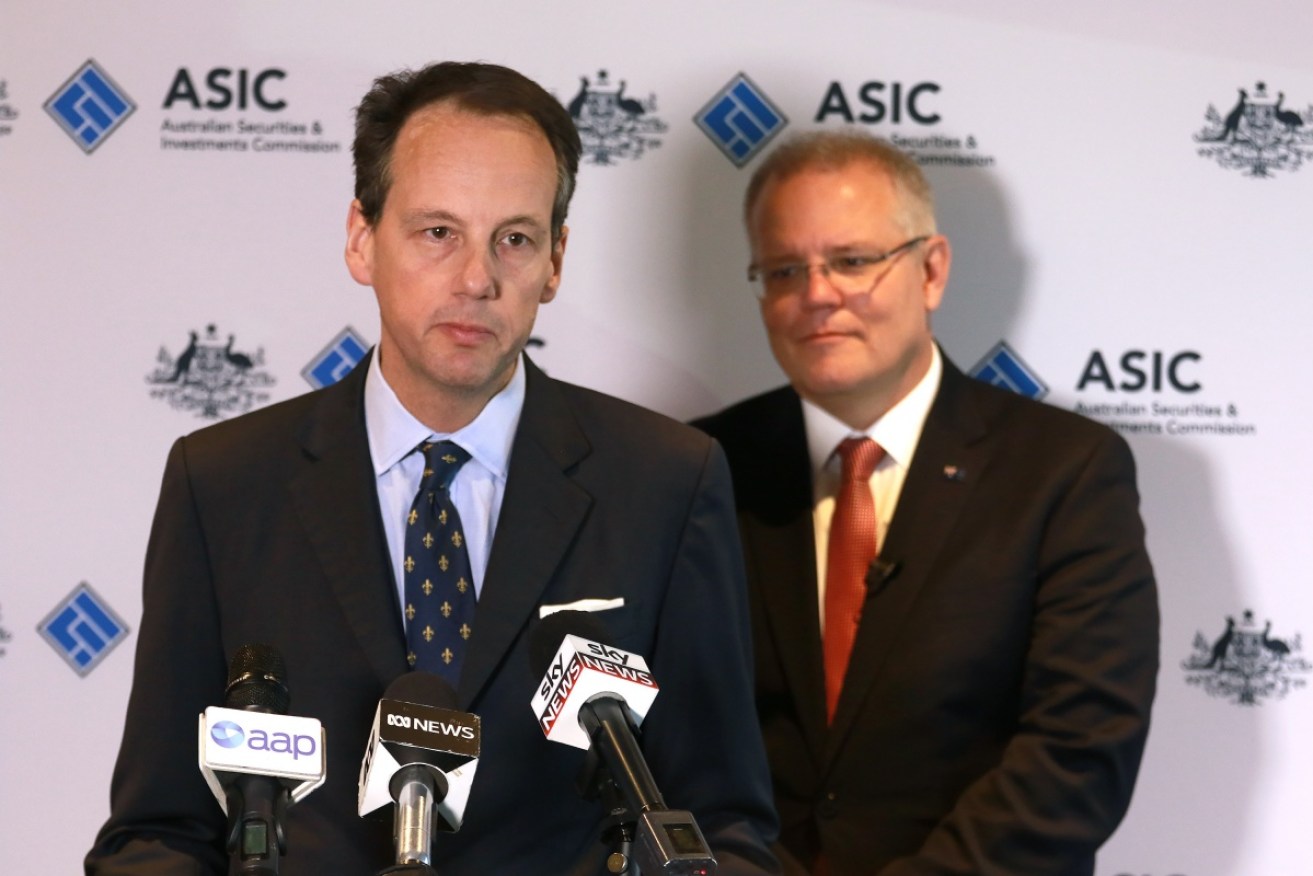ASIC, the mega-regulator failing to keep our banks honest


ASIC is the government body responsible for keeping banks in line. Photo: AAP
A guard dog tamed by thieves. That is the unflattering picture of the Australian Securities and Investments Commission painted by the banking royal commission. But is it true?
ASIC is meant to watch over Australia’s financial institutions, by protecting customers and keeping banks and finance institutions in check. It is styled by Prime Minister Scott Morrison as the “tough cop on the beat”.
But the release of the royal commission’s interim report last week painted a markedly different picture of our corporate watchdog. It is too cosy with the big end of town and too lenient in its meting out of justice, the report suggested.
In short, the watchdog is all bark and little bite.
To understand why this allegation is a problem, it is first important to understand the immense size of this mega-regulator, which has steadily grown to encompass almost the entire financial system.
How it got so big
The regulator began its life in 1979 as the National Companies and Securities Commission, responsible for overseeing companies and enforcing company law.
This brought some centralisation to the high-flying world of mergers, acquisitions and business deals, which until then had been overseen by the individual states. But, for a few more years, the states kept some control.
In 1991, it became the Australian Securities Commission, with the states and territories fully deferring their power to the federal agency.
It expanded further in 1997 in response to the Wallis Report – a review of the financial system conduced by prominent businessman Stan Wallis.
It was renamed the Corporations and Financial Services Commission and took on, as then-treasurer Peter Costello said, a much wider ambit of covering “market integrity, disclosure and other consumer protection issues”.
No longer was it just a corporate regulator. Now it had jurisdiction over large chunks of the increasingly important financial services sector.
In 1998 it was renamed as ASIC and took on yet more responsibility for protecting consumers in the relatively new sector of superannuation, plus insurance and – crucially – retail banking
And in 2010 it got yet more power – over trustee companies, consumer credit and finance broking and for supervising trading on more novel financial products such as ‘derivatives’ and ‘futures’.
So in under four decades, what started as a national regulator of companies became the primary supervisor of Australia’s multi-billion-dollar financial services industry.
If it is all bark and no bite, then an enormous and enormously important sector goes unsupervised.
The tools of the trade
In order to keep the industry honest, ASIC has a number of tools at its disposal.
A critical tool is its compulsory information-gathering powers.
When necessary, ASIC can even apply for a search warrant, which will then be carried out by the Australian Federal Police.
If someone is caught out, ASIC can issue fines, start legal proceedings, or negotiate an ‘enforceable undertaking’, where a business or person agrees to jump through certain hoops or else face court proceedings.
ASIC can also ban people from certain industries, such as financial advice.

James Shipton, former executive director of Harvard Law School’s program on international financial systems, became chair of ASIC in February 2018. Photo: AAP
ASIC’s effectiveness questioned
Even with these powers, ASIC has struggled to fill the boots assigned to it by government.
Commissioner Kenneth Hayne dedicated almost 40 pages of his interim report to regulatory failings, and ASIC bore the brunt of this criticism.
He found ASIC was too cosy with the big players in the industry and the punishment it meted out was rarely a deterrent.
He said ASIC rarely took businesses to court, instead preferring to negotiate a punishment with the business.
In one case, ASIC handed CommInsure a $300,000 fine for misbehaviour that could have earned a maximum $8 million penalty, and even asked the insurer if it thought that sum was appropriate.
The obstacles it faces
So why is ASIC such a light touch? According to Patrick McConnell of Macquarie University, the regulator is simply “spread too thinly”.
But he said a simple increase in funding would not solve the problem.
Mr McConnell’s solution is to break up the regulator and start from scratch, and create a new, more-focused body dedicated to monitoring conduct.
Melbourne University law school professor Elise Bant had a slightly different take. She said ASIC’s troubles stemmed in part from the legislation it relies on.
The way that the laws are set up currently, it’s very hard to prove deceptive conduct because you need to prove dishonest intent.
Instead, she said ASIC should try to prove a business has engaged in misleading conduct, which is easier to prove but carries a lesser punishment. That way she said the regulator would at least get a result.
But for these big companies it’s often “water off a duck’s back”, Professor Bant said.
She also pointed to the expense of taking a well-funded company to court, saying more funding would help in this regard.
“If you want an aggressive cop on the beat, you have to fund it properly,” she said.
-with Jackson Stiles








